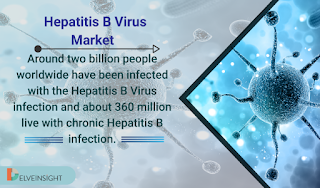Uremic Pruritus Market Research Report 2030 | Uremic Pruritus Market Trends | DelveInsight
Uremic pruritus or more accurately termed ‘chronic kidney disease-associated pruritus’ (CKD-aP) remains a frequent and compromising symptom in patients with advanced or end-stage renal disease. The pathogenesis of CKD-aP remains obscure. Parathormone and histamine as well as calcium and magnesium salts have been suspected as pathogenetic factors. Newer hypotheses are focusing on opioid-receptor derangements and micro-inflammation as possible causes of CKD-aP, although until now this could not be proven.
DelveInsight's "Uremic Pruritus (UP) Market Insights, Epidemiology, and Market Forecast 2030" report delivers an in-depth understanding of the Uremic Pruritus (UP), historical and forecasted epidemiology as well as the Uremic Pruritus (UP) market trends in the United States, EU5 (Germany, Spain, Italy, France, and United Kingdom) and Japan.
Geography Covered
The United States, EU5 (Germany, France, Italy, Spain, and the United Kingdom), and Japan
Request for a free sample copy of the report: https://www.delveinsight.com/sample-request/uremic-pruritus-market
Uremic Pruritus (UP) Disease Understanding and Treatment Algorithm
Uremia refers to excessive urea in the blood, and occurs when both kidneys stop working (renal failure). Pruritus, or itch, is a common problem for patients with chronic renal failure or end stage renal disease. It affects about one-third of patients on dialysis and is more common with haemodialysis than continuous ambulatory peritoneal dialysis (CAPD).
Uremic pruritus is characterized by daily bouts of itching that tend to worsen at night and may prevent sleep. The itch may be generalised or localised to one area, most often the back, abdomen, head and /or arms. In haemodialysis patients, the pruritus is lowest the day after dialysis and peaks 2 days afterwards. The skin may appear normal or dry (xerosis), with few to numerous scratch marks and/or picked sores.
The DelveInsight Uremic Pruritus (UP) market report gives a thorough understanding of the Uremic Pruritus (UP) by including details such as disease definition, symptoms, causes, pathophysiology, diagnosis and treatment.
Uremic Pruritus (UP) Epidemiology
The Uremic Pruritus epidemiology division provide insights about historical and current Uremic Pruritus (UP) patient pool and forecasted trend for every seven major countries. It helps to recognize the causes of current and forecasted trends by exploring numerous studies and views of key opinion leaders. This part of the DelveInsight report also provides the diagnosed patient pool and their trends along with assumptions undertaken.
Key Findings
· Approximately 15% of the adult population in the United States, or 30 million people, suffer from CKD, with an estimated 50% in stages III–V. Of the patients diagnosed with stage III–V CKD, approximately 25% suffer from moderate-to-severe pruritus.
The Uremic Pruritus epidemiology covered in the report provides historical as well as forecasted Uremic Pruritus (UP) epidemiology scenario in the 7MM covering the United States, EU5 countries (Germany, Spain, Italy, France, and the United Kingdom), and Japan from 2017 to 2030.
Click here and get access to free sample copy of our report.
Uremic Pruritus (UP) Drug Chapters
Expected launch of SK-1405 (Sanwa Kagaku Kenkyusho), Nalbuphine ER (Trevi Therapeutics), MR13A9 (Kissei Pharmaceutical), and Difelikefalin/CR845 (Cara Therapeutics/Enteris BioPharma), LT5001 (Lumosa Therapeutics) shall fuel the growth of the market during the forecast period, i.e., 2020–2030.
Drug chapter segment of the Uremic Pruritus (UP) report encloses the detailed analysis of Uremic Pruritus (UP) marketed drugs and late stage (Phase-III and Phase-II) pipeline drugs.
Uremic Pruritus (UP) Market Outlook
Clinicians and investigators have tested numerous topical and systemic treatments for pruritus. In general, most of the published data regarding treatment of uremic pruritus either are retrospective or underpowered prospective studies; therefore, recommended treatment regimens remain largely based on expert opinion. Here, the most common available therapies for uremic pruritus have been described below.
Pruritus may be extremely vexing at times and difficult to control. Therapeutic options in CKD-aP are, however, limited. Most studies on this symptom are not reliable because of inadequate documentation of patient’s characteristics, concomitant diseases, therapeutic measures taken, and often very low case numbers. Moreover, effects that might be statistically significant may not necessarily be clinically relevant and vice versa.
The Uremic Pruritus (UP) market outlook of the report helps to build the detailed comprehension of the historic, current, and forecasted Uremic Pruritus (UP) market trends by analyzing the impact of current therapies on the market, unmet needs, drivers and barriers and demand of better technology.
According to DelveInsight, Uremic Pruritus (UP) market in 7MM is expected to change in the study period 2017-2030.
Download sample pages: https://www.delveinsight.com/sample-request/uremic-pruritus-market
Visit our repository of reports: https://www.delveinsight.com/report-store.php


Comments
Post a Comment